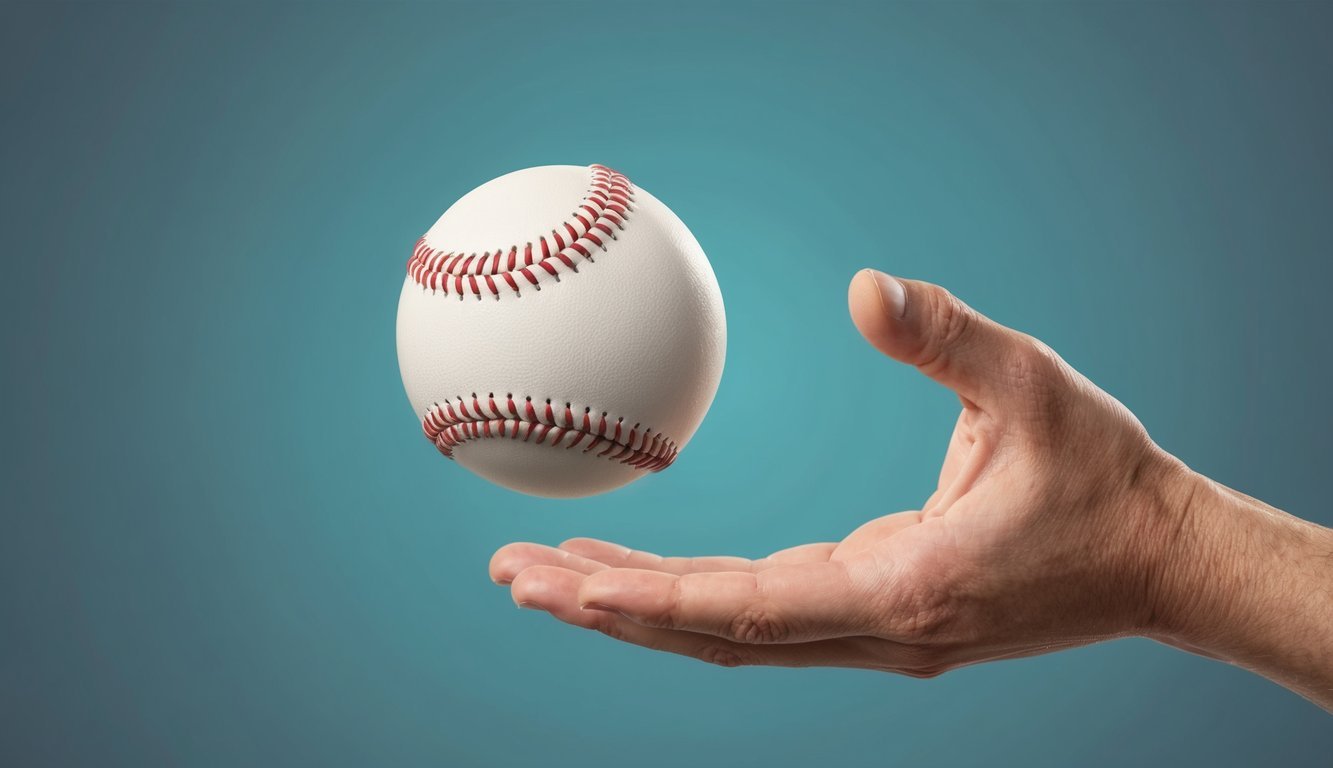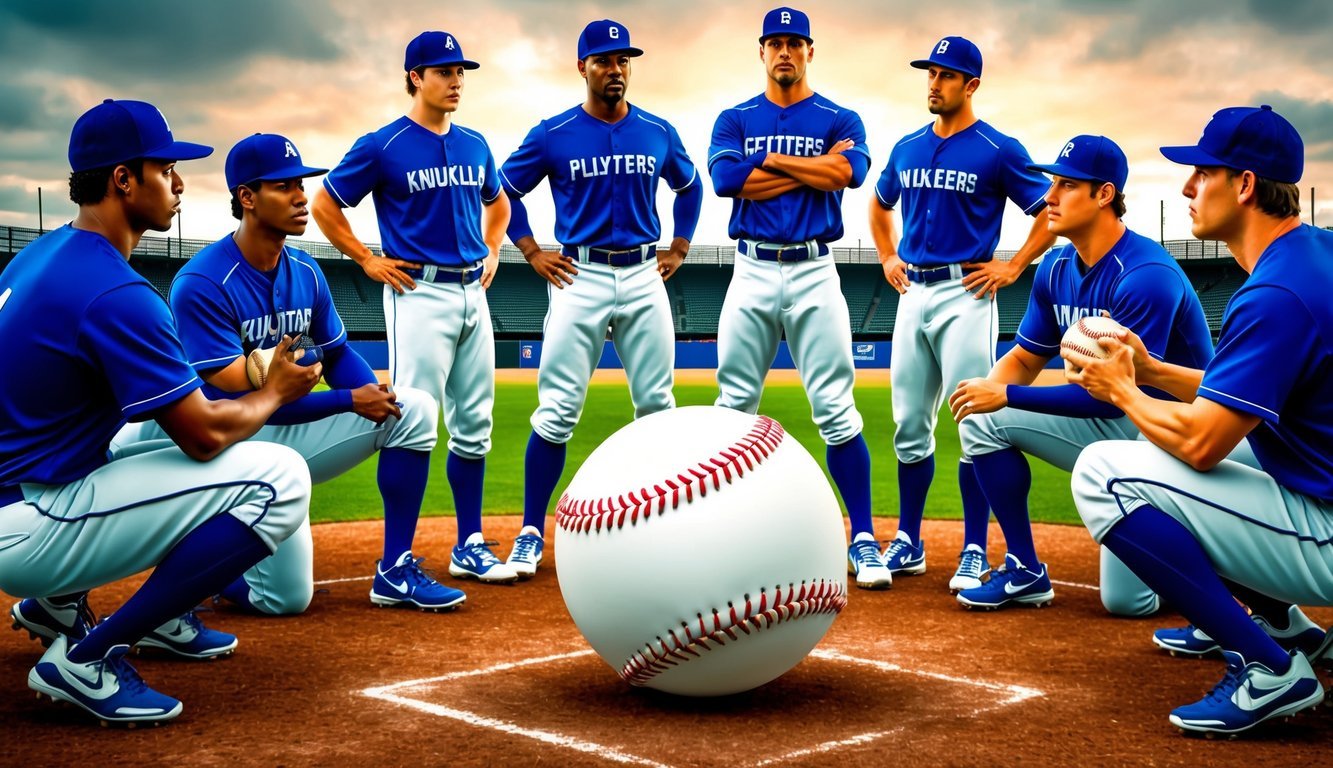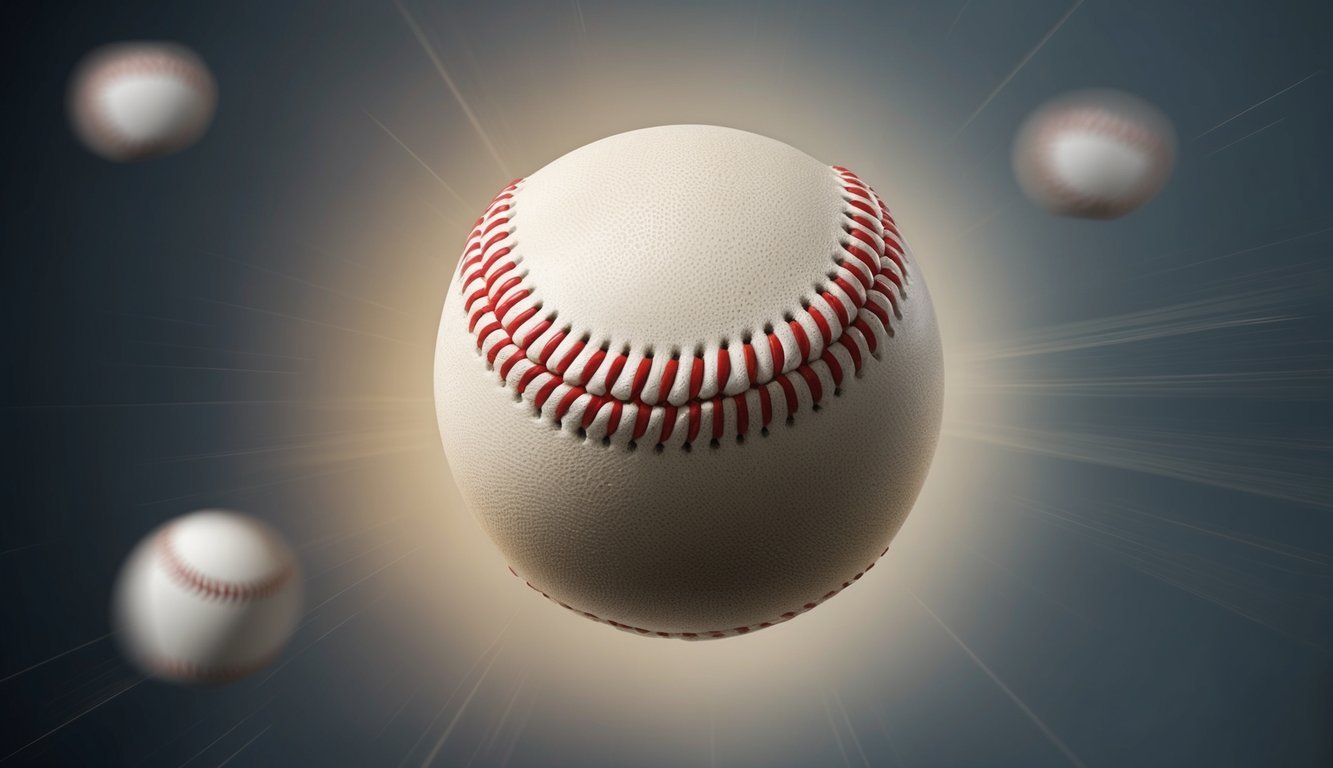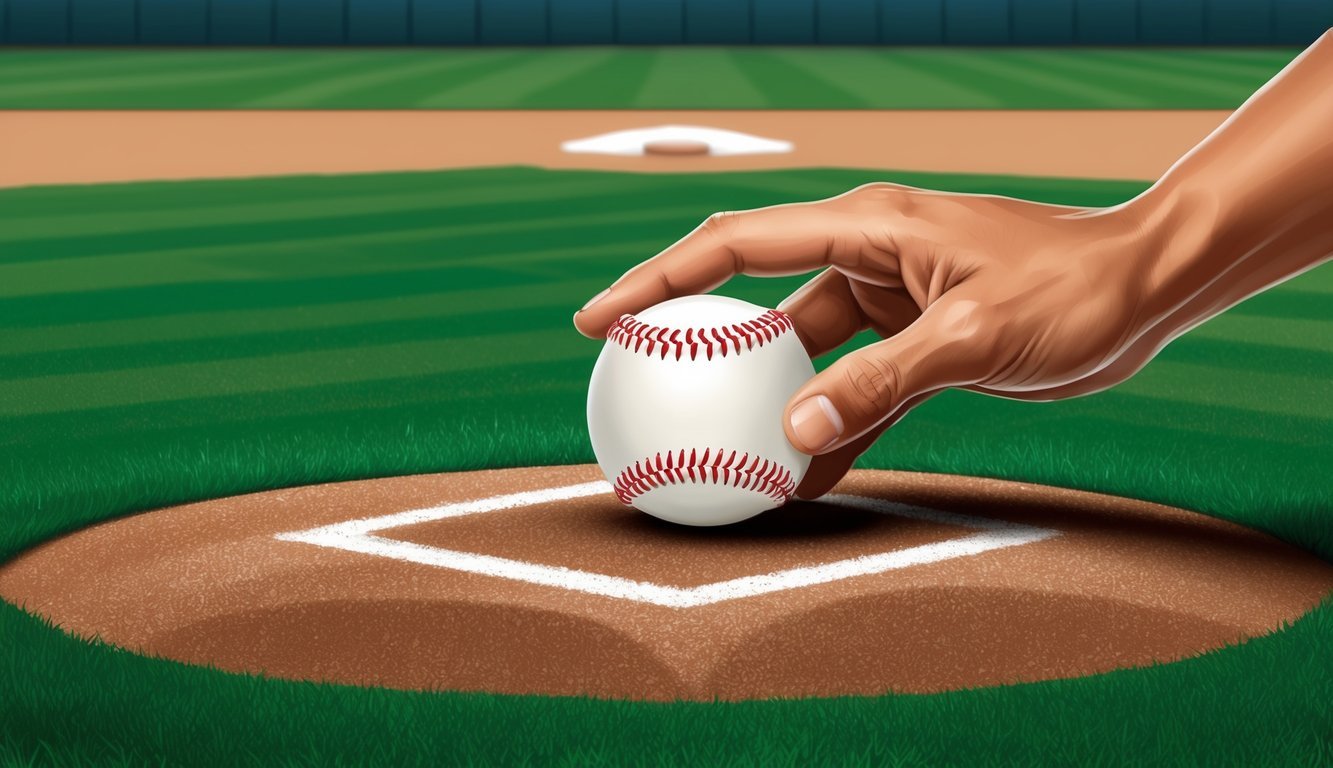The knuckleball is one of the most mysterious and challenging pitches in baseball.
This elusive pitch can baffle even the most skilled hitters with its erratic movement.
To throw a knuckleball, a pitcher grips the ball with their fingernails or knuckles.
Then, they release it with minimal spin, causing it to flutter unpredictably towards home plate.
Mastering the knuckleball requires patience and practice.
Pitchers who perfect this technique can become valuable assets to their teams.
The pitch is notoriously difficult to hit when thrown correctly.
The key lies in the grip and release, with pitchers aiming to minimize rotation and let air currents do the work.
While few pitchers specialize in the knuckleball, those who do often enjoy long careers.
This is due to the reduced strain on their arms compared to traditional pitches.
Learning this unique pitch can add an exciting dimension to a pitcher’s arsenal and potentially extend their time on the mound.
Understanding the Knuckleball
The knuckleball is a unique and enigmatic pitch in baseball, known for its unpredictable movement and ability to befuddle batters.
This unconventional pitch has a rich history and intriguing physics behind its effectiveness.
History and Famous Knuckleballers
The knuckleball’s origins date back to the early 1900s.
Eddie Cicotte is often credited with popularizing the pitch in the 1910s.
Over the years, several pitchers have made their mark as knuckleball specialists in Major League Baseball.
Phil Niekro, nicknamed “Knucksie,” had a remarkable 24-year career throwing primarily knuckleballs.
He won 318 games and was inducted into the Baseball Hall of Fame in 1997.
Charlie Hough became known for his knuckleball in the 1970s and 1980s.
He pitched for 25 seasons and recorded over 2,000 strikeouts.
Tim Wakefield enjoyed a successful 19-year career with the Boston Red Sox, relying heavily on his knuckleball.
He won two World Series titles and became a fan favorite.
More recently, R.A. Dickey revitalized his career with the knuckleball.
In 2012, he won the National League Cy Young Award, a rare feat for a knuckleballer.
The Physics Behind the Pitch
The knuckleball’s erratic movement is due to its lack of spin.
Unlike other pitches, a well-thrown knuckleball rotates less than half a turn from the pitcher’s hand to home plate.
This minimal rotation causes the ball to interact with air currents in unpredictable ways.
The seams of the baseball create small areas of turbulence as it moves through the air.
These turbulent pockets cause the ball to “dance” or “flutter,” making it challenging for batters to predict its path.
The pitch’s speed, typically between 65-70 mph, allows more time for these air currents to affect its trajectory.
Factors like humidity, wind, and even air conditioning can influence a knuckleball’s movement.
This sensitivity to environmental conditions adds to its unpredictability and effectiveness.
Fundamentals of the Knuckleball Grip
The key to a successful knuckleball lies in the grip.
Proper finger placement and palm positioning are crucial for minimizing spin and creating the pitch’s signature flutter.
Positioning the Fingers
A pitcher has several options for finger placement when throwing a knuckleball.
The two-finger grip involves pressing the index and middle fingernails against the ball’s seams.
This creates a stable base for release.
Some pitchers prefer a three-finger grip, adding the ring finger for extra control.
The fingertips should barely touch the ball, allowing for a clean release with minimal spin.
For those seeking maximum stability, a four-finger grip incorporates the pinky as well.
This can help pitchers with larger hands maintain control.
Regardless of the number of fingers used, keeping the nails trimmed is essential.
Long nails can interfere with the release and affect the pitch’s movement.
Thumb and Palm Placement
The thumb plays a crucial role in stabilizing the knuckleball grip.
It should be placed on the opposite side of the ball from the fingers, creating a balanced hold.
The pitcher’s palm should not make contact with the ball.
This helps reduce friction and allows for a cleaner release.
Keeping the wrist stiff during delivery is important.
A loose wrist can introduce unwanted spin, negating the pitch’s effectiveness.
Some pitchers find success by slightly spreading their fingers.
This can create more surface area for gripping the ball without increasing spin.
Practice is key to finding the most comfortable and effective grip.
Pitchers may need to experiment with different finger positions to achieve the desired lack of rotation.
Executing the Pitch

Throwing a knuckleball requires precise technique and practice.
The key elements involve a unique windup, a careful release, and proper follow-through.
Mastering these components will help create the signature floating motion of this tricky pitch.
Mastering the Windup
The windup for a knuckleball differs from other pitches.
Start with a balanced stance on the mound.
Keep your body relaxed and your grip loose.
As you begin your motion, maintain a smooth, fluid movement.
Avoid telegraphing the pitch with any sudden changes in your delivery.
Your arm action should be consistent with your other pitches.
This helps disguise the knuckleball from batters.
Focus on keeping your upper body steady throughout the windup.
A stable core contributes to better control.
Practice your windup repeatedly to build muscle memory.
This repetition will help you maintain consistency in game situations.
Release and Follow Through
The release is crucial for a successful knuckleball.
As you reach the release point, push the ball forward with your fingertips.
Avoid snapping your wrist or adding spin.
The goal is to let the ball leave your hand with as little rotation as possible.
Keep your fingers behind the ball at release.
This helps create the desired lack of spin.
Your arm should follow through naturally, ending up by your opposite hip.
Maintain your balance throughout the motion to ensure accuracy.
After release, stay tall and finish your pitching motion completely.
Good follow-through helps with control and reduces strain on your arm.
Common Mistakes and Corrections
One frequent error is gripping the ball too tightly.
This can lead to unintended spin.
Practice holding the ball lightly, using just enough pressure to control it.
Another mistake is rushing the delivery.
Take your time and focus on a smooth, consistent motion.
Some pitchers struggle with maintaining a steady release point.
Work on repeating your mechanics to improve consistency.
If the ball is spinning too much, check your finger placement and ensure you’re not turning your wrist at release.
Pay attention to your arm speed.
Keeping it similar to your fastball will help fool batters.
If you’re having trouble with control, slow down your motion slightly until you find the right balance of speed and accuracy.
Strategy and Mental Preparation

Mastering the knuckleball requires more than physical technique.
Mental preparation and strategic thinking are crucial for success on the mound.
A pitcher must develop a keen ability to read batters and control the game’s pace.
Reading the Batter
Observing the batter’s stance and tendencies is key for knuckleball pitchers.
Watch for signs of discomfort or uncertainty.
By analyzing the batter’s movements, knuckleball pitchers can adjust their strategy to exploit weaknesses in their approach.
Additionally, understanding how to measure hand for glove selection can play a crucial role in ensuring better grip and control, which is essential for effectively delivering the unpredictable pitch.
The little details, like a batter’s twitch or posture shift, can provide vital clues that make all the difference in a close game.
Some batters may crowd the plate or take a more open stance when facing a knuckleball.
Pay attention to how hitters react to different speeds and movements.
Adjust your pitches accordingly.
If a batter seems to time your knuckleball well, mix in a fastball to keep them off-balance.
Communication with your catcher is vital.
Develop a system of subtle signs to indicate variations in your knuckleball grip or intended movement.
Controlling the Game Tempo
Knuckleball pitchers often benefit from a slower pace.
Take your time between pitches to reset and focus.
This can also disrupt the batter’s rhythm and concentration.
Practice different timing patterns in your delivery.
Occasionally quicken your pace to catch hitters off guard.
Vary the time you hold the ball before pitching.
Use the unpredictable nature of the knuckleball to your advantage.
Don’t be afraid to throw it in unconventional counts.
This can make you a truly game-changing pitcher.
Remember, stamina is crucial.
The knuckleball puts less strain on your arm, allowing you to pitch deeper into games.
Use this to wear down opposing lineups over time.
Advanced Techniques and Drills

Mastering the knuckleball requires dedication and specialized practice.
Pitchers can refine their technique and improve consistency through targeted drills and movement variations.
Incorporating Movement Variations
Experienced knuckleball pitchers experiment with subtle grip adjustments to create different movement patterns.
Shifting finger placement slightly can alter the ball’s rotation and trajectory.
Some pitchers use a two-finger grip, while others prefer three fingers for added control.
Changing arm angles and release points also impacts the pitch’s behavior.
A higher release tends to produce more vertical movement, while a lower arm slot may generate more side-to-side action.
Pitchers should practice these variations to expand their arsenal.
Wind and humidity affect knuckleballs dramatically.
Learning to adapt to different conditions is crucial for success.
On calm days, focus on minimizing spin.
In windy conditions, experiment with release angles to harness the breeze.
Practice Drills for Consistency
The “hot potato” drill improves release technique.
Pitchers rapidly transfer the ball between hands before throwing, encouraging a clean release with minimal spin.
This drill builds muscle memory for letting the ball slip off the fingertips smoothly.
Target practice enhances accuracy.
Set up a strike zone target and aim for specific quadrants.
Start close and gradually increase distance as control improves.
Track success rates to measure progress over time.
Pitching to live batters provides invaluable feedback.
Observe how hitters react to different grips and release points.
This real-world practice helps pitchers fine-tune their approach.
Video analysis is a powerful tool.
Record throwing sessions and review footage to spot inconsistencies in technique.
Slow-motion playback reveals subtle differences in successful and unsuccessful pitches.
Taking Care of Your Pitching Arm

Proper arm care is crucial for knuckleball pitchers to maintain health and performance.
Focusing on injury prevention and targeted exercises helps build the stamina and control needed for this unique pitch.
Preventing Injuries
Knuckleball pitchers face lower injury risks compared to other pitchers due to the reduced arm stress.
However, they should still take precautions.
Warming up properly before pitching is essential.
Gentle stretches for the shoulder, elbow, and wrist help prepare the arm for action.
Pitchers should listen to their bodies and avoid overexertion.
Taking regular rest days allows the arm to recover.
Ice therapy after pitching sessions can reduce inflammation and soreness.
Maintaining good fingernail health is important for knuckleball grip.
Pitchers should keep nails trimmed and moisturized to prevent cracks or breaks.
Exercises for Stamina and Control
Knuckleball pitchers need to build arm strength and endurance.
Light weightlifting can help improve overall arm strength.
Focus on the shoulders, biceps, and triceps.
Wrist curls and reverse wrist curls target the forearms, enhancing control over the ball.
Meanwhile, squeezing a stress ball or using grip strengtheners can improve finger strength for better ball grip.
Throwing drills help develop muscle memory and refine the pitching motion.
Practicing with a partner at varying distances improves accuracy and control.
Many professional pitchers incorporate yoga or Pilates into their routines.
These exercises enhance flexibility and core strength, supporting better overall pitching mechanics.
